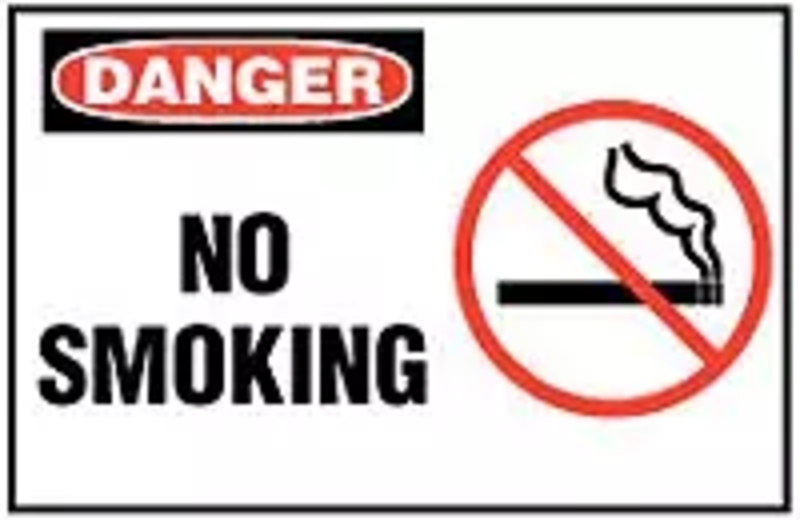No Smoking Signs

A smoke-free workplace has many advantages. It protects those that are smokers from the harm they are inflicting upon themselves. It also protects all others from the dangers of second-hand smoke. Furthermore, for the employer, it significantly reduces health care costs. People exposed to smoke in the workplace are 17% more likely to develop lung cancer. OSHA does not have any regulations that apply directly to smoking in the workplace. However OSHA does have standards which limit the exposure levels of a number of chemicals. And many of the chemicals are found in tobacco smoke.
They include but are not limited to limits on carbon monoxide, nicotine, sulfur dioxide, ammonia, nitric oxide, formaldehyde and arsenic. So essentially there is either none or very limited smoking that takes place in the workplace. In addition, Employers do have a legal right to both restrict and also prohibit completely the use of tobacco. To insure regulations are followed and workplace safety improved, a number of workplace signs have been created.
In some cases, because of the nature of the location and the machinery in operation, smoking is absolutely prohibited For example where chemicals are used the following signs will be posted: DANGER, OXYGEN, NO SMOKING, NO OPEN FLAMES; DANGER, BENZENE, CANCER HAZARD, FLAMMABLE — NO SMOKING, AUTHORIZED PERSONNEL ONLY. RESPIRATOR REQUIRED.
In areas where lead work in taking place a sign such as this is present: WARNING, LEAD WORK AREA, POISON!! NO SMOKING OR EATING. That sign may also include a skeleton symbol. When smoking is allowed in some places, a sign may announce: NO SMOKING EXCEPT IN DESIGNATED AREAS. Or there may be a sign that simply says: THANK YOU FOR NOT SMOKING. Those signs may include the standard symbol of a cigarette within a circle with a diagonal red line going through it.
In work areas populated by multilingual employees the sign may be in more than one language. An example of that kind of sign might state: NO SMOKING, NO FUMAR.
To insure that these signs withstand the conditions found within a manufacturing environment they should be constructed at the very least of a tough plastic, such as a heavy-duty laminate.